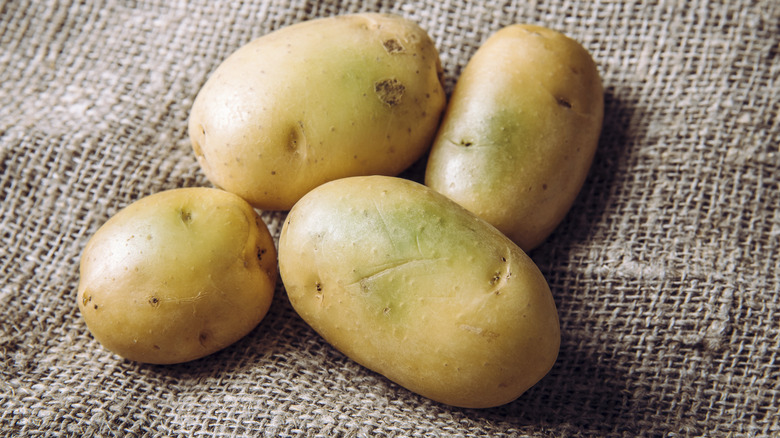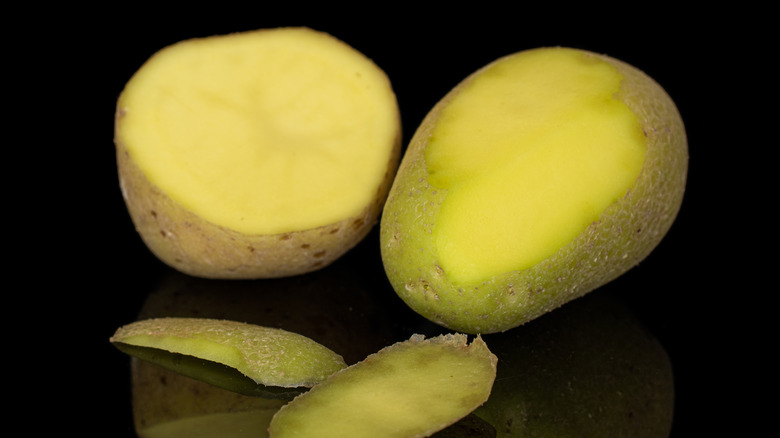You Should Think Twice Before Eating Green Potatoes
Color changes in fruits and vegetables aren't necessarily a bad thing. If an avocado turns brown, for example, sometimes it just means it's been exposed to too much air, but the taste remains unaffected. The same can be said for bananas. When the peel begins to show signs of browning, not only is it safe to eat, but the slightly overripe texture is actually ideal for banana bread. You might assume this applies to potatoes too since it isn't uncommon to find green ones, but unfortunately, that's not the case; you really should think twice about eating a green potato.
A potato that's turned green isn't nearly as dangerous to eat as one that's mushy, has black spots, or extra growths sprouting out of the eyes, however, the U.S. Department of Agriculture (USDA) says that it's still best to avoid them. The color indicates that they contain higher amounts of solanine, a glycoalkaloid compound that makes potatoes taste bitter and can also cause you to get sick if you consume too much of it.
What causes potatoes to turn green?
Solanine isn't technically what makes potatoes green — that's actually chlorophyll, the pigment responsible for making all plants green. Chlorophyll doesn't affect the flavor of the potato or whether or not it's safe to eat, but its presence is an indicator that solanine has also formed. Chlorophyll and solanine both develop under the same conditions, when potatoes are exposed to too much light either before or after being harvested, but since solanine doesn't have a color, the easiest way to tell whether it's there or not is the green chlorophyll.
Though they form for the same reason and at the same time, North Dakota State University explains that they have different reactions to sunlight, which is the reason solanine is toxic and chlorophyll isn't. Chlorophyll absorbs energy from the sun, while solanine produces a chemical that acts as a natural pesticide. This effectively keeps insects away, but it makes potatoes bitter and potentially harmful for humans to ingest.
Exceptions for eating green potatoes
If your potatoes have turned green but you don't want to throw them out, the good news is you don't necessarily have to. The USDA confirms that certain parts of a green potato are still safe to eat, as long as you peel the skin first, and cut off anything with a green tinge to it. It's also crucial to cook the potato well, because the additional heat further decreases solanine levels, according to Healthline.
To avoid ending up with green potatoes in the first place, you'll want to stay away from potatoes with lighter-colored skin and stick to red or russet potatoes instead, as they are less sensitive to light and therefore less prone to developing solanine. No matter the potato variety, simply storing them properly can make a big difference. Avoid keeping your potatoes out in the open, and instead store them somewhere dark. The less sun your potatoes get, the less likely they'll turn green.


